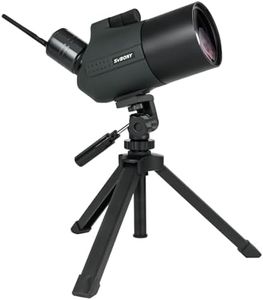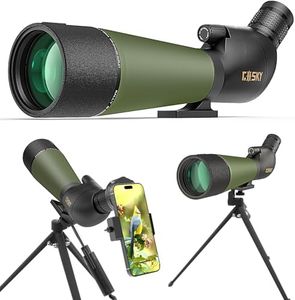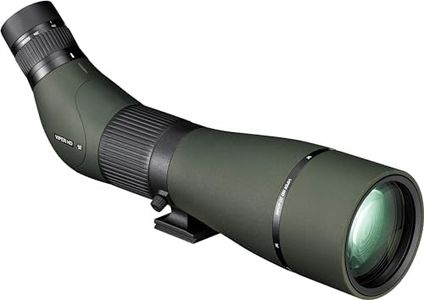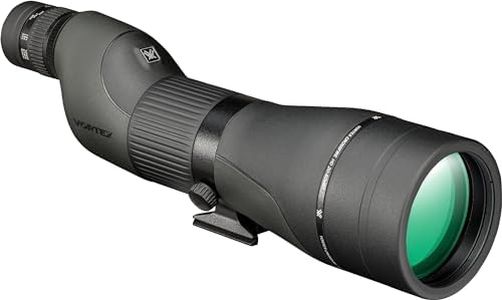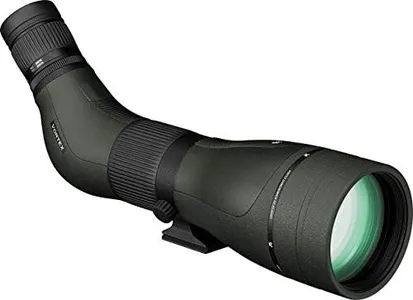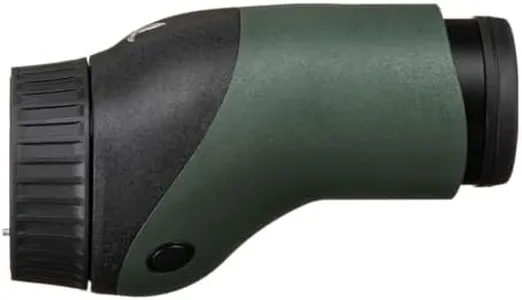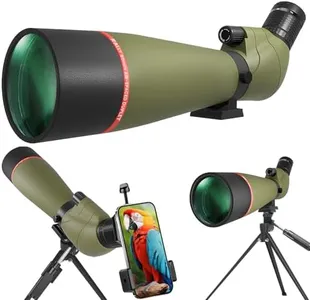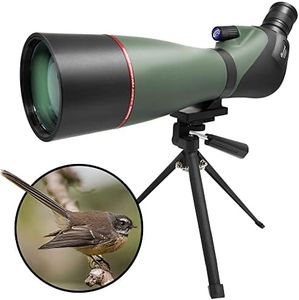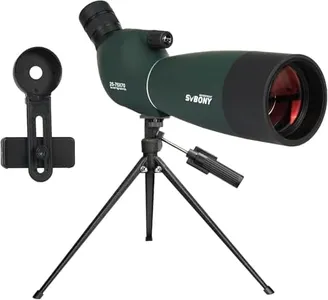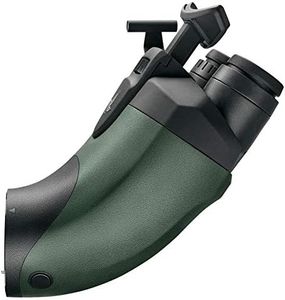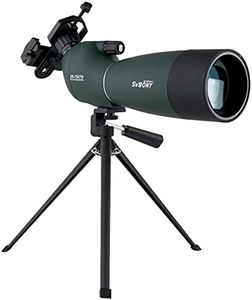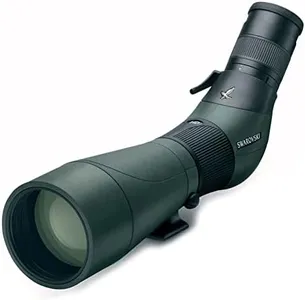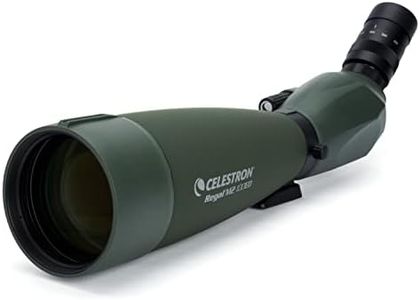Buying Guide for the Best Spotting Telescopes
Choosing the right spotting telescope can greatly enhance your outdoor experiences, whether you're bird watching, hunting, or simply enjoying nature. The key to finding the best spotting telescope for you is understanding the various specifications and how they align with your specific needs. Here are the main specs to consider and how to navigate them.MagnificationMagnification refers to how much closer an object appears through the telescope compared to the naked eye. This is important because higher magnification allows you to see more detail. Spotting telescopes typically have magnifications ranging from 15x to 60x. For general use, a magnification of 20x to 40x is usually sufficient. If you need to see very fine details, such as in bird watching or target shooting, you might prefer a higher magnification. However, higher magnification can also make the image shakier and harder to keep in focus, so consider your stability and viewing conditions.
Objective Lens DiameterThe objective lens diameter is the size of the front lens and is measured in millimeters. This spec is crucial because a larger diameter allows more light to enter the telescope, resulting in a brighter and clearer image. Spotting telescopes typically have objective lenses ranging from 50mm to 100mm. For general daylight use, a 60mm to 80mm lens is usually adequate. If you plan to use the telescope in low light conditions, such as dawn or dusk, or want the brightest possible image, opt for a larger lens.
Field of ViewField of view (FOV) is the width of the area you can see through the telescope at a specific distance, usually measured in feet at 1,000 yards. A wider field of view makes it easier to locate and track moving objects, which is particularly useful for bird watching or observing wildlife. Spotting telescopes with a lower magnification generally offer a wider field of view. If you need to observe a broad area or follow fast-moving subjects, choose a telescope with a wider FOV.
Eye ReliefEye relief is the distance from the eyepiece at which you can still see the full field of view. This is especially important for people who wear glasses. Longer eye relief (15mm or more) allows you to use the telescope comfortably without having to remove your glasses. If you wear glasses, look for a spotting telescope with longer eye relief to ensure a comfortable viewing experience.
Lens CoatingLens coating refers to the special coatings applied to the lenses to reduce glare and improve light transmission. This is important because better light transmission results in clearer and brighter images. There are different levels of coating: coated, fully coated, multi-coated, and fully multi-coated. Fully multi-coated lenses provide the best image quality and are ideal for serious users who need the clearest possible view. For casual use, fully coated or multi-coated lenses are usually sufficient.
Waterproof and FogproofWaterproof and fogproof features protect the telescope from moisture and internal fogging, which can be crucial for outdoor use in various weather conditions. These features are important if you plan to use the telescope in humid, rainy, or cold environments. Look for spotting telescopes that are labeled as waterproof and fogproof to ensure durability and reliable performance in all weather conditions.
Weight and PortabilityWeight and portability are important considerations if you plan to carry your spotting telescope over long distances or use it in the field. Lighter and more compact models are easier to transport and set up. However, they may have smaller objective lenses and lower magnification. If you need a telescope for hiking or travel, choose a lightweight and portable model. For stationary use, such as at a shooting range or from a fixed observation point, a heavier model with better optics might be more suitable.

